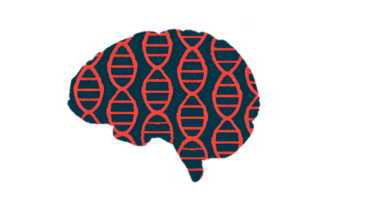First-line Ocrevus may aid early relapsing MS long-term outcomes
Findings were derived from 9 years of OPERA I, OPERA II data

Using Ocrevus (ocrelizumab) as a first-line treatment for early-stage relapsing forms of multiple sclerosis (MS) is significantly better at delaying disease progression than starting with a less effective drug and switching to Ocrevus later.
That’s according to nine years of data from the OPERA I (NCT01247324) and OPERA II (NCT01412333) Phase 3 trials, where participants were first assigned to Ocrevus or Rebif (interferon beta-1a) for two years, and then they all received Ocrevus in the trials’ open-label extensions.
The analysis focused on patients who’d never received any disease-modifying therapy (DMT) before enrolling in the OPERA studies. After nine years, nearly half of those always on Ocrevus achieved no evidence of disease activity (NEDA-3), meaning they were free of relapses, MRI activity, and confirmed disability worsening, nearly twice the rate observed in patients who first started on Rebif.
“These data support the use of the high-efficacy therapy [Ocrevus] as a first-line therapy in patients diagnosed with early-stage [relapsing MS], for improved long-term clinical outcomes with a favorable safety profile, similar to what was observed in the overall [Ocrevus]-treated population,” the researchers wrote. The study, “Long-Term Treatment With Ocrelizumab in Patients With Early-Stage Relapsing MS,” was published in Neurology.
Ocrevus is an antibody-based therapy that targets the CD20 protein at the surface of B-cells, immune cells that contribute to MS-driving inflammation. By promoting the cells’ death, the therapy should ease inflammation and reduce MS activity and progression.
The therapy was approved for relapsing forms of MS based on data from the OPERA trials, which showed it was superior to Rebif at reducing relapse rates and MRI lesions, and at slowing disability progression. These differences continued for more than a decade in the open-label extensions, even after the Rebif group had switched to Ocrevus, for up to nine years.
While accumulating evidence suggests that starting a high-efficacy DMT such as Ocrevus as early as possible is better at reducing the risk of disability accumulation in the long term, there’s limited data about whether that also applies to people who are relatively early in their disease course and haven’t yet received a DMT.
Benefits of first-line Ocrevus
Here, researchers at Roche, the parent company of Ocrevus’ developer Genentech, and their colleagues examined data from a subgroup from the OPERA trials who were treatment-naive and had been diagnosed up to two years before enrolling in the studies.
The study included 757 patients across both trials, 382 of whom were initially assigned to Ocrevus and 375 to Rebif. About two-thirds of them (67%) entered the open-label extensions and received Ocrevus until their nine-year follow-up assessment.
As observed in the main OPERA analyses, treatment-naive patients with early relapsing MS also benefited more from Ocrevus in the main trials than from Rebif. Ocrevus-treated patients were about 3.5 times more likely to achieve NEDA after two years (72.5% vs. 43.8%).
They were also consistently less likely to have any of the individual components of NEDA, including relapses, active inflammatory lesions and new or enlarging lesions, and 24-week confirmed disability progression, which is defined as an increase in Expanded Disability Status Scale (EDSS) scores sustained for at least six months.
The benefits of starting Ocrevus as the first-line therapy were sustained throughout the open-label periods, the researchers found. For example, 48.2% of the patients who started Ocrevus maintained their NEDA-3 status for the whole nine years compared with 25.7% of those who switched to Ocrevus in the extensions. This meant that people who started Ocrevus early had a 2.7 greater likelihood of maintaining NEDA.
Comparing disability progression, relapse rates
While the rates of disability progression became similar between the two groups after Rebif patients switched to Ocrevus, the benefits in the first two years were sustained through nine years, meaning the Rebif group had greater disability levels after nine years because their disease had progressed faster on Rebif.
Relapse rates were also significantly lower among Ocrevus patients for the whole nine years (0.05 vs. 0.09) because those on Rebif had seen a higher rate of relapses in the main trials. Similar observations were made for brain volume loss, a measure of neurodegeneration.
“It is important to note that the higher disability accrual and average brain volume loss observed during the [two] years on [Rebif] treatment were not recovered, even after switching to [Ocrevus], indicating that initiating treatment with [Ocrevus] earlier in the disease course is beneficial to patients,” the researchers wrote.
The overall safety profile was similar between both groups, with no new safety signals observed during the open-label extension phase. The most reported side effects were infections, but rates of them remained low and stable over nine years of continuous Ocrevus treatment.
The results “further reinforce the use of an initial high-efficacy therapy, which can provide beneficial short-term and long-term effects on disease progression as compared with an escalation approach for patients with MS,” the researchers said.






